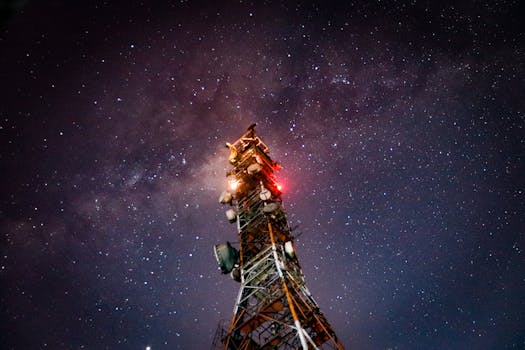
LEO Satellites: Revolutionizing Global Connectivity with Low Earth Orbit Technology
LEO satellites, or Low Earth Orbit satellites, are a type of satellite that orbits the Earth at an altitude of around 160 to 2,000 kilometers. This relatively low altitude allows LEO satellites to provide faster and more reliable connections than traditional satellite technology, which typically operates at much higher altitudes. With the increasing demand for global connectivity, LEO satellites are playing a crucial role in bridging the digital divide and providing internet access to remote and underserved communities.
One of the primary advantages of LEO satellites is their ability to offer lower latency and higher data transfer rates compared to traditional satellites. This is because LEO satellites are closer to the Earth, which reduces the signal delay and allows for faster data transmission. Additionally, LEO satellites can provide more targeted and localized coverage, making them ideal for applications such as rural broadband, IoT connectivity, and emergency response services.
How LEO Satellites Work
LEO satellites work by using a network of satellites in low Earth orbit to provide global coverage. Each satellite in the network communicates with a group of ground stations, which are responsible for transmitting and receiving data to and from the satellites. The data is then routed through the satellite network, allowing users to access the internet, make voice calls, and send messages. LEO satellites use advanced technologies such as phased array antennas and laser communication systems to achieve high-speed data transfer and low latency.
Several companies, including SpaceX, OneWeb, and Amazon’s Kuiper Systems, are currently developing and launching LEO satellite constellations. These constellations will consist of thousands of satellites working together to provide global coverage and high-speed connectivity. The development of LEO satellite technology is not without its challenges, however, as it requires significant investment, advanced technology, and careful planning to ensure that the satellites do not interfere with each other or other space-based systems.
Applications of LEO Satellites
LEO satellites have a wide range of applications, from providing broadband internet access to remote communities to supporting IoT devices and emergency response services. Some of the key applications of LEO satellites include:
Rural broadband: LEO satellites can provide high-speed internet access to rural and remote communities, bridging the digital divide and enabling access to essential services such as education, healthcare, and banking.
IoT connectivity: LEO satellites can provide low-power, low-cost connectivity for IoT devices, enabling applications such as smart agriculture, smart cities, and industrial automation.
Emergency response: LEO satellites can provide critical communication services during emergencies such as natural disasters, Search and Rescue (SAR) operations, and humanitarian crises.
Conclusion
In conclusion, LEO satellites are revolutionizing the way we communicate and access information, offering faster and more reliable connections than traditional satellite technology. With their ability to provide lower latency and higher data transfer rates, LEO satellites are ideal for applications such as rural broadband, IoT connectivity, and emergency response services. As the development of LEO satellite technology continues to advance, we can expect to see significant improvements in global connectivity and access to essential services.



